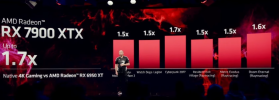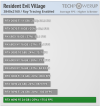General comment about marketing everywhere -- they really need to stop these silly $xxx.99 price points, as they're not fooling anyone. Just say it's $1000 and $900.
They actually said out loud in the presentation "the fastest card under 1000$"
You can't do it without the $999



